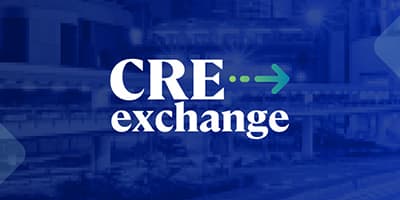Key highlights
At the June 9-11 CREFC Annual Conference in New York, market participants across the CRE debt ecosystem signaled a shift from January’s “cautious optimism” to a more grounded realism, focused on refinancing challenges, policy uncertainty, and uneven sector performance
Debt issuance rebounded after April’s volatility, with 2025 SASB volumes surpassing 2024 levels, boosted by a surprising wave of office deals tied to Class A assets with experienced sponsors, although sales activity remains selective due to high borrowing costs and a high bid-ask spread
Five-year loan structures now dominate the market, often with built-in extensions that will be tested as 2021-vintage maturities come due and reveal whether these loans truly function as short-term instruments
Capital is available but narrowly focused on core, low-leverage deals, while rising operating costs, higher property taxes, and tariff concerns are flowing through to underwriting assumptions
CRE debt market participants come together for a mid-year check-in
The Commercial Real Estate Finance Council (CREFC), a trade organization for the CRE debt industry, hosted its annual conference in New York from June 9–11. The event brought together lenders (balance sheet, securitization), credit investors, and third-party providers in the CRE debt space to discuss the current state of the market. While financing-specific concerns were front and center, sessions also touched on broader macroeconomic trends and property-level fundamentals, offering a complete view of what’s shaping the commercial real estate financing landscape in 2025.
The following are the Altus Group Research Team’s key takeaways from the event.
“Liberation Day” is seen as a blip, not a breakpoint
April’s volatility briefly halted issuance, but by May, the debt markets snapped back. CMBS volumes rebounded, with single-asset single-borrower (SASB) issuance alone topping $36 billion through the first five months of the year, up nearly $10 billion compared to the same period a year prior and driven in part by a surprising surge in office-backed deals. Office accounted for nearly one-third of SASB issuance, nearly double its typical share, suggesting that low-leverage, Class A assets with experienced sponsors are still financeable. Despite the recovery, the sale transaction market has not kept pace, weighed down by lingering bid-ask gaps, elevated borrowing costs, and tariff uncertainty. The capital is there, but conviction remains selective.
The five-year loan has taken over, but extensions are baked in
There was near-universal consensus that across conduit, SASB, and CRE CLOs, the five-year structure is now the default option. Borrowers prefer the flexibility, and lenders are more comfortable underwriting to shorter horizons. Freddie Mac, for example, reported that nearly 40% of its 2025 production thus far has been five-year fixed-rate debt. But the reality is a bit more complex: in many cases, these loans are effectively structured with extensions in mind from day one. Multiple panelists questioned if these are truly “five-year” deals. The industry may soon find out as the first wave of 2021-vintage five-year loans nears maturity.
A lot of capital is looking for similar deals
Capital is seemingly abundant: Government Sponsored Enterprise (GSE) production is up year-to-date, bank balance sheet lending showed signs of growth in early 2025, and closed-end fund dry powder is estimated to sit at record levels. Yet conference participants agree that most of that liquidity is chasing a narrow slice of the market: well-located, low-leverage assets with institutional sponsorship. According to brokerages, investment sales volume is effectively only up year-over-year for core investor profiles. Panelists noted that the financing is competitive, but only for certain deals.
Operating costs and policy uncertainty are reflected in underwriting
Rising expenses (especially property taxes, insurance, and labor) remain a central underwriting concern. Insurance costs are stabilizing, but property tax burdens are increasing in key metros like Chicago, New York, and parts of Texas. Estimates suggest that tariff-related inflation could raise construction hard costs by 3-4%, though a slowdown in new starts could force contractors to tighten bids. Borrowers are delaying non-essential capital expenditures at properties, and underwriters are taking a sharper pencil to operating expense ratio assumptions and lease-up timelines, particularly in multifamily, where margins are already under pressure.
Property fundamentals are resilient, but perception is still cautious
Many assets are holding up in terms of operating performance. Class A office vacancy in many NYC submarkets has dipped to record lows, data centers continue to benefit from surging AI-driven demand, and the domestic consumer continues to spend, much to the benefit of the retail and hospitality sectors. Even as the overall CMBS delinquency rate eclipsed 7% in May, much of the distress remains concentrated in aging office assets and select Class B regional malls, where the delinquency rates are higher than the overall average. Multifamily remains operationally sound in most regions, even in the Sunbelt. But the CRE market’s caution lingers. Lenders and investors alike continue to price in downside risk, suggesting that confidence in underwriting fundamentals still lags the real performance on the ground.
Assessing the sentiment shift since January
At the January 2025 CREFC conference in Miami, the tone was one of “cautious optimism”. Panelists expressed hope that interest rates would stabilize (and gradually come down), new equity would return to the market, and transaction activity would gradually recover. By June, that language had largely disappeared. The mid-year mood was not quite pessimistic, just more grounded. With five months of data behind them, market participants showed less speculation and more realism around refinancing risk, uneven sector performance, and the uncertainty still surrounding monetary and regulatory policy. Even so, the CRE finance market has remained functional.
Want to be notified of our new and relevant CRE content, articles and events?
Author

Cole Perry
Associate Director of Research, Altus Group
Author

Cole Perry
Associate Director of Research, Altus Group
Resources
Latest insights






Apr 17, 2025